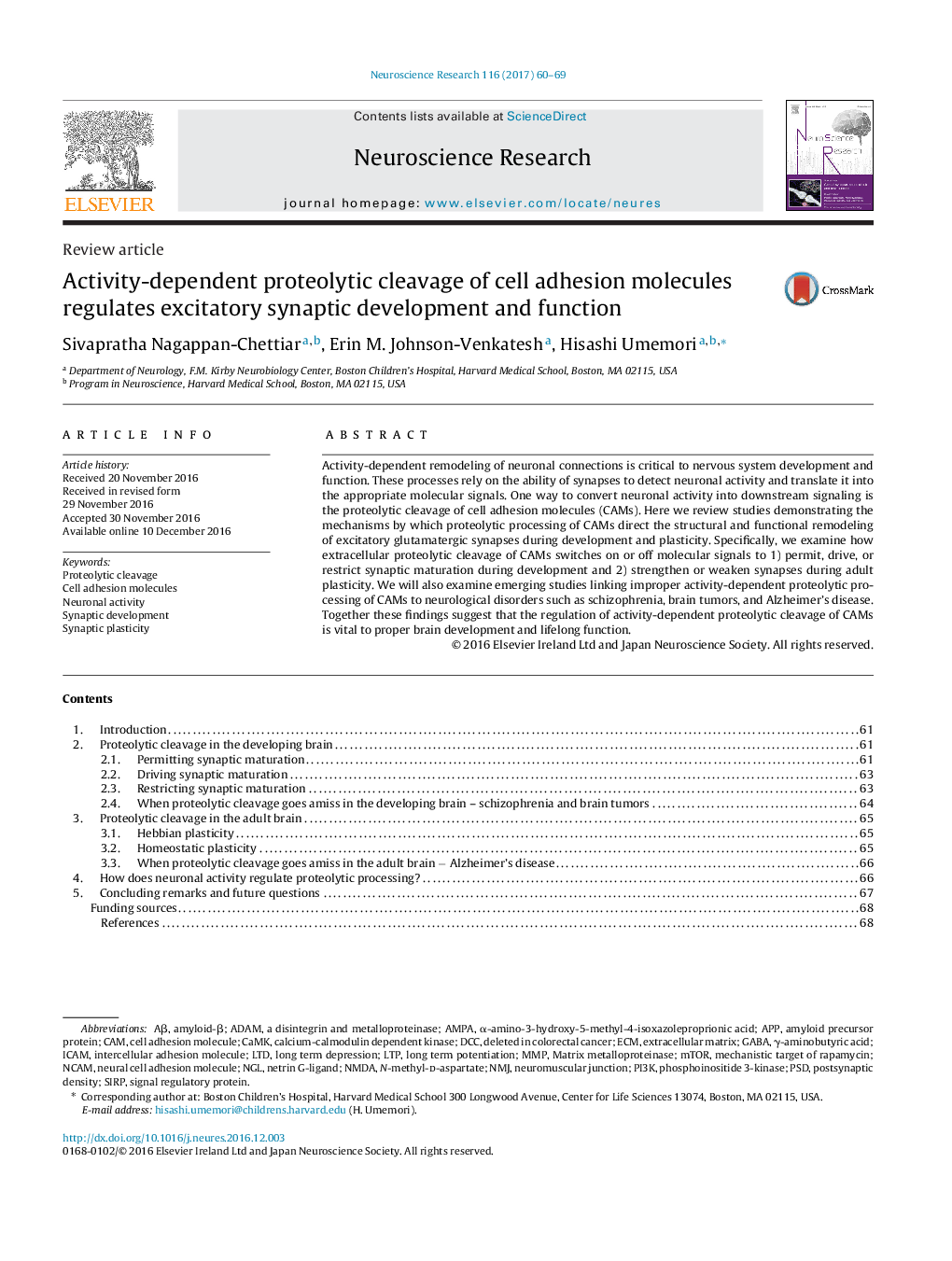| کد مقاله | کد نشریه | سال انتشار | مقاله انگلیسی | نسخه تمام متن |
|---|---|---|---|---|
| 5739002 | 1615267 | 2017 | 10 صفحه PDF | دانلود رایگان |
- Activity-dependent proteolytic cleavage of cell adhesion molecules (CAMs) can permit, drive and restrict synapse maturation.
- Activity-dependent proteolytic cleavage can regulate Hebbian and homeostatic plasticity.
- Improper proteolytic cleavage underlies schizophrenia, brain tumors and Alzheimer's disease.
- Neuronal activity may control cleavage by regulating proteases, CAMs or both.
Activity-dependent remodeling of neuronal connections is critical to nervous system development and function. These processes rely on the ability of synapses to detect neuronal activity and translate it into the appropriate molecular signals. One way to convert neuronal activity into downstream signaling is the proteolytic cleavage of cell adhesion molecules (CAMs). Here we review studies demonstrating the mechanisms by which proteolytic processing of CAMs direct the structural and functional remodeling of excitatory glutamatergic synapses during development and plasticity. Specifically, we examine how extracellular proteolytic cleavage of CAMs switches on or off molecular signals to 1) permit, drive, or restrict synaptic maturation during development and 2) strengthen or weaken synapses during adult plasticity. We will also examine emerging studies linking improper activity-dependent proteolytic processing of CAMs to neurological disorders such as schizophrenia, brain tumors, and Alzheimer's disease. Together these findings suggest that the regulation of activity-dependent proteolytic cleavage of CAMs is vital to proper brain development and lifelong function.
Journal: Neuroscience Research - Volume 116, March 2017, Pages 60-69
